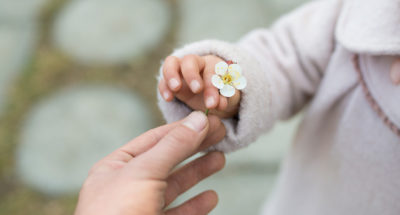Instructions
About the book
- Alone in his cave, Bear feels bored. He decides to invite his friends for dinner, but then realizes that he has no food in his cupboard. But along comes his friend Mouse with a pie, and Bear says, “Thanks.” One by one, more friends visit, each one bringing food, which Bear thanks them for. A wonderful feast is ready, when Bear says how badly he feels that he doesn’t have anything to share. The animals hug him and reassure him that it is alright — that Bear has stories he can share! Once more, Bear says, “Thanks,” and the animals join in a feast.
- Introduce the book by encouraging the students to look at the cover. Ask:
- What animals do you see here?
- What does it look like they are doing? How can you tell?
- What do you think they are feeling? How can you tell?
Reading the Book
- Begin reading the book. As students realize the pattern in the text, encourage them to complete the sentence, “And the bear says…”
- Pause the story when the bear frowns because he has no food to share. Ask:
- How is bear feeling now?
- What do you think the other animals will say or do?
- Pause again at the page that says, “…the friends feel grateful for their good friend Bear.” Ask:
- What does the word grateful mean?
- At the end of the story, ask:
- What were some of the things that Bear was grateful for?
- Yes, Bear felt grateful for all the things his friends brought, but what else did he feel thankful for?
- Bear didn’t have any food to share — but the animals were still grateful to him. What were they grateful for?
- Can you think of a time you were grateful to someone — maybe a time when you said, “Thanks” to another person?
Thinking about Gratitude
- Give them a few moments to think about a time they were grateful to someone. Then have them turn to a partner and share their idea.
- Ask:
- Would anyone like to share your ideas with the whole group?
- As you hear their responses, point out the different examples of being grateful for objects or possessions, for actions that show caring or friendship, or for personal qualities, etc.
Closure
- Ask students to talk about how it feels to think of something or someone they’re grateful for.
Extensions
- Have students role-play the story, or act it out using puppets.
- Have the students draw a picture of what they were grateful for, and write or dictate about what their picture shows.
- Post the gratitude pictures on a bulletin board, or make them into a class book.
Source
“Nurturing Gratitude From the Inside Out: 30 Activities for Grades K–8” was originally developed by The Inner Resilience Program, in partnership with the Greater Good Science Center and the John Templeton Foundation.
For the entire curriculum, click here.



Comments